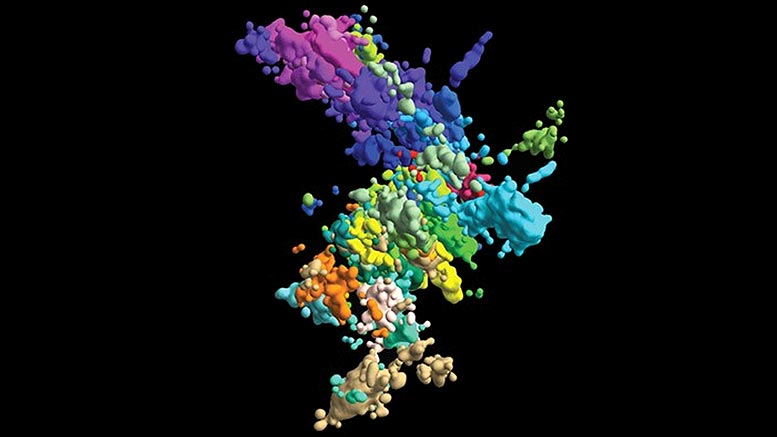CTCF is essential for establishing chromatin structure in human embryos
This web page was produced as an assignment for an undergraduate course at Davidson College.
Researchers name CTCF protein responsible for chromatin structure for ESTABLISHING topologically associating domains and A/b compartments during zygotic genome activation in human embryos unlike mice

Who would have thought that human sperm and embryos differ drastically from one of the most commonly used animal models in research, mice? Such notable differences came to light in 2019 when Xuepeng Che and his colleagues from the Beijing Institute of Genomics investigated the dynamics of 3D chromatin structure during human embryogenesis. This chromatin structure will play a crucial role in regulating gene expression throughout an organism’s life. They were successful at identifying CTCF, a transcription factor that regulates chromatin, as necessary for establishing its structure during zygotic genome activation in humans because it establishes topologically associating domains.
For clarification, topologically associating domains are regions in the genome where DNA sequences interact more frequently than outside of these defined regions. Also, zygotic genome activation is the initiation of gene expression in embryos after fertilization.
The researches first examined the chromatin interactions in human sperm, 2-cell embryos, and 8-cell embryos by constructing genome sequence libraries using Hi-C sequencing. Overall, they found that interactions between topologically associating domains gradually increased during embryonic development, but were absent in 2-cell embryos.
Next, they investigated the dynamics of A/B compartments, a chromatin structural feature for organization. A compartments are essentially open binding regions of chromatin that will be expressed, and B compartments are closed regions that will not be expressed. Che et al. reported that A/B compartmentalization is also absent in 2-cell embryos and becomes more evident throughout development. Principal components analysis further demonstrated that compartmentalization is not noticeable until the morula stage of 16-cells and becomes more evident there after. However, mice show clear A/B compartmentalization earlier at the zygotic genome activation stage.
Plotting topologically associating domain signal variance at different read depths of human sperm and embryos revealed that they are absent in sperm, unlike mouse sperm and human blastocysts, 70-cell embryos. Further investigation into human and mouse sperm showed that they both express cohesion proteins, which are also required for chromatin structural features, but only human sperm does express CTCF. Che et al. believe that this absence of CTCF in human sperm is responsible for its loss of topologically associating domains.
After establishing that the domain boundaries prefer specific locations in the genome, Che et al. demonstrated that the establishment of topologically associating domains requires zygotic genome activation in humans, but is independently established in mice. Therefore, they wanted to identify the protein involved in this establishment during genome activation. To do this, they analyzed the differences in expression of cohesion complex proteins and CTCF at the different cell stages mentioned previously. From the results, researchers concluded that CTCF expression requires zygotic genome activation because CTCF expression was limited before this stage and drastically increased during it and after.
Lastly, the researchers reported that CTCF expression during zygotic genome activation is required for establishing topologically associating domains because they were not established in embryos where they had inhibited the expression of CTCF in embryos.
Such investigations that revealed substantial differences between human and mouse embryos in their chromatin structures provide new insight of mammalian embryonic development. This opens doors for further investigation of ways that chromatin structure and even embryogenesis varies across other species that were once thought to be very similar. It may also call to question conclusions drawn from other research of embryogenesis that used animal models as predictors of human biological processes.
While the findings of this study are irrefutable due to the researchers backing many of their findings with other supporting experiments, gaps in the process of chromatin structure establishment during embryogenesis were ignored. This may lead to further research that expands on this study to include an explanation as to what biological process occurs during zygotic genome activation that induces CTCF expression in human embryos. A more broad, but evolutionarily important, question that this study leaves us with is why does chromatin structure establishment vary across species of the same class of animals? Despite the questions that still remain, this study revealed important elements of chromatin structure which is significant due to its crucial role in regulating gene expression which has even more implications. Gene expression has profound effects on multicellular organisms because it is responsible for cell development, differentiation, and adaptations and much more. Therefore, it will be interesting to learn how future studies will follow up on chromatin structure during embryogenesis and its effects on regulating gene expression.
Sommer Holmes is a Senior Biology Major and Hispanic Studies Minor at Davidson College. Contact her at soholmes@davidson.edu.
References
Chen, X., Ke, Y., Wu, K. et al. Key role for CTCF in establishing chromatin structure in human embryos. Nature 576, 306–310 (2019). https://doi.org/10.1038/s41586-019-1812-0
© Copyright 2020 Department of Biology, Davidson College, Davidson, NC 28036.
Access homepage here.